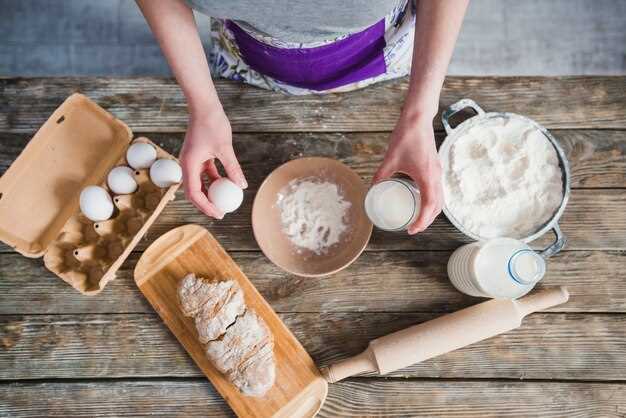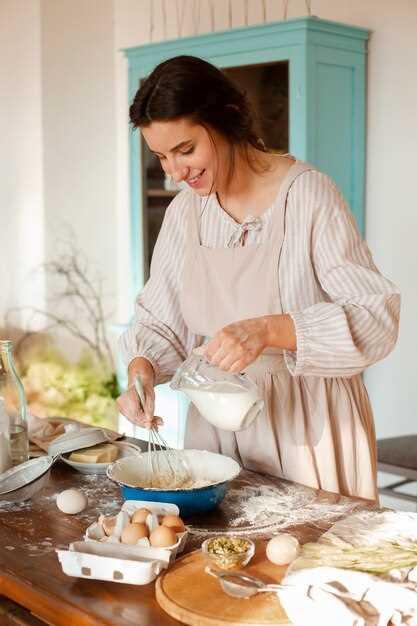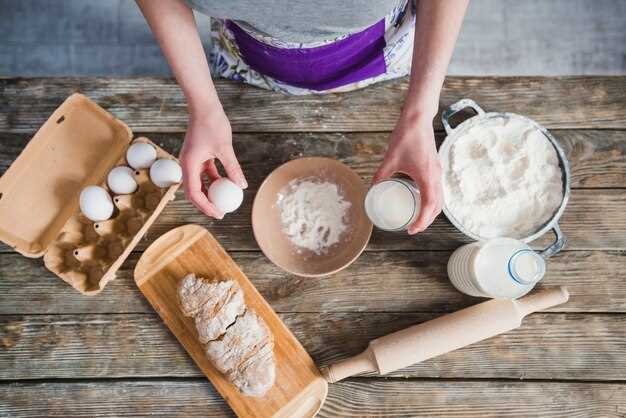First, ensure your ingredients are at room temperature. Butter and eggs mix better this way, providing the cake with the perfect texture. Measure ingredients accurately, as precision is key. Use a scale for dry ingredients and a clear measuring cup for liquids, guaranteeing consistency and balance.
Next, focus on the mixing technique. Cream the butter and sugar until the mixture is light and fluffy – this step incorporates air, essential for a soft cake crumb. When adding eggs, introduce them one at a time, blending thoroughly after each addition. This prevents curdling and achieves a homogenous mixture.
Now, attention should turn to the dry mix. Sift the flour, adding baking powder or soda and salt, ensuring even distribution. Gradually fold these into the wet ingredients using a spatula, rather than an electric mixer, to maintain the airiness. Overmixing leads to denseness, so mix just until incorporated.
Preheat your oven before baking. This allows cakes to rise properly as soon as they are placed inside. Use middle oven racks and monitor the cake’s progress without opening the door too often, preserving the heat. A skewer inserted should come out clean when the cake is ready.
Finally, let the cake cool completely before frosting. A warm cake will cause frosting to melt and slide off. Patience at this stage ensures a visually appealing and structurally sound cake. Follow these precise steps, and a moist, delicious cake will soon be at your table.
Preparing Your Ingredients and Tools

Gather all your ingredients before you start mixing. This approach ensures you won’t miss any components and will help streamline the process. Measure out your flour, sugar, butter, and other essentials according to your recipe. Use a scale for accuracy, particularly with flour, to prevent adding too much or too little. Room-temperature ingredients, such as eggs and butter, yield better mixing consistency and volume, providing a smoother batter.
Arrange your tools and check that they are clean and dry. A reliable mixer, whether handheld or stand, will greatly assist in achieving the right texture for your cake batter. Ensure you have mixing bowls of various sizes ready to handle different tasks. Separate utensils like spatulas and whisks enable specific actions like folding and beating, which are crucial at different stages. If your recipe requires sifting, don’t forget to have a sieve or a sifter ready.
Prepare your baking pans by lining them with parchment paper or greasing them lightly with butter, then dusting with flour. This preparation helps in easy release once your cake is baked. Understand the specifications of your oven, and preheat it as directed, since proper temperature is key to an even bake. A thermometer placed inside can verify the accuracy of your oven’s calibration.
Keep a pastry brush and a cooling rack at hand. These tools will aid in applying any glazes and cooling your cake without the risk of condensation making the bottom soggy. With everything in place, you are set to mix confidently and efficiently, focusing entirely on combining ingredients and creating your cake masterpiece.
Selecting the Right Ingredients for Flavor and Texture
Choose high-quality flour that suits your cake’s needs. All-purpose flour works for most recipes, but for a tender crumb, cake flour is ideal because of its lower protein content. Using fresh eggs at room temperature elevates the cake’s structure and lightness. Real butter brings richness; opt for unsalted so you can control the salt content precisely.
For sweetness, fine-grain sugar blends better with butter and eggs, ensuring a consistent batter. If a moist cake is your goal, incorporate oil, which retains moisture longer compared to butter alone. Experiment with yogurt or sour cream to add tanginess and a tender texture.
To enhance flavor, pure vanilla extract outshines artificial alternatives in depth and aroma. For a chocolate cake, explore the richness of Dutch-processed cocoa or the robustness of natural cocoa according to your preferred intensity. Do not overlook salt; it is crucial for balancing sweetness and enhancing overall flavor complexity.
Baking powder and baking soda are not interchangeable; verify their freshness and use them appropriately according to the recipe to achieve the desired rise and crumb. By carefully considering each ingredient’s role, you set the stage for a delicious and perfectly textured cake every time.
Discuss the importance of fresh ingredients and their impact on cake quality.
Choose fresh ingredients to elevate your cake from ordinary to extraordinary. Begin with fresh eggs, as they contribute to a cake’s structure and moisture. Fresh eggs have more robust whites, making your batter stable and enhancing texture.
Utilize quality butter, ideally unsalted and recently purchased. Fresh butter influences flavor and the cake’s crumb tenderness. Stale butter not only affects taste but can also introduce unwanted odors.
Opt for fresh milk or cream, since these ingredients affect moisture content and flavor. Milk nearing its expiration date can sour during baking, altering the taste unfavorably.
- Flour: Choose flour that hasn’t absorbed excess moisture or odors. Store it properly to maintain freshness, as aged flour impacts the cake’s lift and density.
- Baking Powder/Soda: Ensure these leavening agents are within their expiry date. Their freshness guarantees the cake rises properly, affecting its lightness and overall texture.
- Fruit and Nuts: For recipes involving fruits or nuts, freshness is non-negotiable. Fresh fruit offers the best natural sweetness and texture, while fresh nuts provide rich flavor and crunch.
Finally, select high-quality, fresh vanilla extract to enhance the cake’s aroma with nuanced sweetness rather than artificial notes.
Essential Baking Tools for a Smooth Baking Process
Invest in a set of high-quality measuring cups and spoons to ensure precision in your ingredient ratios. Accurate measurements can make the difference between a cake that rises perfectly and one that falls flat.
A sturdy, non-stick mixing bowl is also a must-have. It should be large enough to handle vigorous mixing without splashing ingredients all over your workspace.
Consider purchasing a stand mixer if you frequently bake. This appliance saves time and effort during creaming and beating stages. A hand mixer is a budget-friendly alternative but may take longer to achieve the same results.
A baking scale provides exact ingredient measurements, particularly important for dry goods like flour and sugar. It ensures consistent results each time you bake.
Parchment paper or silicone baking mats line your baking pans, preventing cakes from sticking and ensuring even cooking without additional grease.
You’ll also need a set of good-quality cake pans. Opt for those with high sides and a heavy-duty construction to promote an even bake.
A wire cooling rack is essential for cooling your cake evenly. Elevating the cake allows air to circulate, reducing the risk of soggy bottoms.
Finally, have a selection of spatulas, both rubber and offset. Rubber spatulas are wonderful for scraping every bit of batter into your pans, while offset spatulas are ideal for smooth icing and decorating.
Detail the key tools needed, such as mixers, pans, and measuring cups.
Opt for an electric mixer, either stand or handheld, to efficiently mix ingredients for a smooth batter. A stand mixer is particularly helpful for multitasking, as it allows hands-free operation, while a handheld mixer is more affordable and space-saving.
Choose sturdy and durable baking pans. Non-stick or silicone pans are excellent for ensuring easy removal and even baking. Consider different shapes and sizes, like round, square, and loaf pans, depending on the cake recipe. It’s wise to have at least one 8 or 9-inch round pan in your collection for versatility.
Invest in a high-quality set of measuring cups and spoons. Precision is key in baking, so ensure your measuring tools are accurate and easy to read. Opt for stainless steel or sturdy plastic to ensure longevity. For liquid ingredients, use measuring cups with spouts to avoid spills, and choose flat-edged spoons for dry ingredients to precisely level off excess.
A sturdy mixing bowl is essential for combining ingredients. Look for bowls with a non-slip base to prevent spills and to provide stability during mixing. A set of bowls in various sizes allows for easy handling of both small and large batches.
Don’t forget a reliable baking thermometer. Accurate oven temperature ensures consistent results every time. An oven thermometer helps compensate for any discrepancies in your oven settings.
With these tools in your kitchen, you’re well-equipped to create beautifully baked cakes effortlessly.
Pre-measuring Ingredients for Accuracy and Consistency
Begin with selecting the right tools: a set of high-quality measuring cups and spoons. Use dry measuring cups for flour, sugar, and similar ingredients, ensuring a level top by using a knife or spatula to scrape excess. For liquids, opt for a transparent measuring jug placed on a flat surface; observe the measurement at eye level to ensure precision.
Consistency in measurements makes a noticeable difference. Always weigh your ingredients when possible. Use a digital kitchen scale for maximum accuracy, especially with flour, as it’s prone to packing and differs greatly in volume by scooping.
Organize your workspace before mixing starts. Measure all ingredients into small bowls or containers. This setup simplifies and speeds up the process, allowing you to focus on mixing and baking steps without scrambling for ingredients.
Temperature matters too. Allow cold ingredients like butter or eggs to reach room temperature for better incorporation into your batter. Pre-measuring gives you control over timing, ensuring these ingredients are ready when you need them.
Lastly, label pre-measured ingredients with sticky notes. This practice avoids last-minute confusion, particularly when juggling multiple recipes. Consistent practice of these tips results in cakes that look and taste delightful every single time.
Explain how precise measurements can affect the cake’s final outcome.
Always measure ingredients accurately to ensure a balanced cake structure. Use a kitchen scale for dry ingredients like flour and sugar, as cup measurements can vary greatly. Misjudging can lead to a cake too dense or too crumbly. For liquids, use a clear measuring cup and check at eye level, ensuring you avoid excess or shortage that can disrupt texture and moisture levels.
Baking, being a science, relies on precise chemical reactions, so substitutions or approximations can alter the intended results. Improper ratios can lead to uneven rising, leaving the cake with either a sunken middle or an overflowed top. Consistent measurements also ensure the even distribution of flavors, providing a harmonious taste with each bite.
Temperature plays a role, so use a thermometer for your oven and ensure the correct baking time. Variations can affect how the cake sets, leading to either overcooked or undercooked interiors. Correct measurements and adherence to guidelines promise consistency, making each baking experience predictably delicious.
Setting the Correct Oven Temperature
Preheat your oven to the temperature specified in your cake recipe. This step ensures that your cake will start baking with the right amount of heat, promoting even rising and baking.
- Verify your oven’s accuracy: Use an oven thermometer to check the actual temperature inside the oven. Many ovens run a few degrees hotter or cooler than the dial setting, which can impact baking results.
- Avoid frequent door opening: Every time you open the oven door, heat escapes, which can lead to an inconsistent baking environment. Use the oven light and window to monitor the cake’s progress instead.
- Understand your recipe’s temperature requirements: Different cakes require different temperatures. For instance, dense cakes like cheesecakes often bake at a lower temperature compared to lighter cakes such as sponges.
- Adjust for special pans and conditions: If using dark or nonstick pans, you may need to reduce the temperature by about 25°F (approximately 15°C) to prevent over-browning.
- Take altitude into account: High altitude can affect baking times and temperatures. Adjust by increasing the oven temperature slightly and reducing sugar and baking powder in the recipe.
Consistently applying these methods will enhance your chance of achieving the perfect bake, resulting in a moist and evenly-cooked cake.
Provide guidance on preheating and maintaining the oven for optimal results.
Always begin by preheating your oven to the required temperature mentioned in your recipe. This ensures the heat is distributed evenly, so your cake starts baking immediately once placed inside. Use an oven thermometer to verify the temperature, as many ovens may not display accurate readings.
Position the oven racks correctly, usually in the center, to promote even air circulation around the cake. If you’re baking more than one cake on different racks, ensure there’s enough space between them for optimal air flow. Avoid opening the oven door too frequently while your cake bakes as this causes significant temperature fluctuations, which may impact the cake’s rise and texture.
Regular maintenance of your oven is key for optimal performance. Clean the oven regularly to remove food residues that could char and create unpleasant odors or smoke. Check the oven seal and door alignment regularly to ensure no heat is escaping. Keep the oven’s vents unobstructed to allow for proper air circulation, which is vital for consistent baking results.
If your cake is browning too quickly but isn’t fully cooked, use a piece of foil to tent over the top, which will allow the center to continue cooking without burning the surface. Finally, always follow your recipe’s instructions regarding oven temperature adjustments, as each cake may have specific needs.
Using Special Additives for Enhanced Flavors
Add a touch of sophistication to your cake with unique extracts. Opt for almond or vanilla extract to elevate the taste profile effortlessly. Consider citrus zest like lemon or orange for a refreshing twist.
Incorporate spices creatively. Cinnamon provides warmth while cardamom adds an exotic essence. Experiment with nutmeg or even star anise for more adventurous palates.
For a tantalizing taste, integrate syrups and liqueurs. A tablespoon of coffee liqueur can enrich chocolate cakes, while amaretto complements almond-flavored creations.
Moving beyond basics, consider these additives:
| Additive | Flavor Profile | Application Tip |
|---|---|---|
| Rose Water | Floral, Subtle Sweet | Use sparingly to avoid overpowering |
| Lavender Extract | Herbal, Aromatic | Pair with honey or lemon |
| Matcha Powder | Earthy, Slightly Bitter | Best in moderation, complements white chocolate |
Incorporating these additives requires a balance; start with small amounts and adjust to taste. Embrace the art of flavor layering for a cake that leaves a lasting impression on every guest.
Video:

The WRONG Way to Decorate a Cake! Common Mistakes When Cake Decorating | Georgia’s Cakes
The WRONG Way to Decorate a Cake! Common Mistakes When Cake Decorating | Georgia’s Cakes
Q&A:
How can I ensure my cake turns out fluffy and light?
To achieve a fluffy and light cake, it’s important to carefully measure your ingredients, especially the flour. Sift the flour before mixing it into the batter to aerate it, which helps in creating a light texture. Also, make sure to cream the butter and sugar together until the mixture is pale and fluffy to incorporate air, which contributes to a softer cake.
What is the best way to avoid a dry cake?
To prevent a dry cake, be sure to not overbake it. Always check for doneness a few minutes before the suggested baking time by inserting a toothpick into the center; if it comes out clean or with a few moist crumbs, the cake is ready. Additionally, make sure you are not using more flour than required, and consider adding ingredients like yogurt or oil to the batter to increase moisture.
Can I substitute baking powder with baking soda in cake recipes?
It’s possible to substitute baking powder with baking soda, but you’ll need to add an acidic component, such as cream of tartar or lemon juice, to activate the baking soda. Typically, use about one-third the amount of baking soda when replacing baking powder, and include an acid. Keep in mind that this change might alter the cake’s flavor slightly.
What are some common mistakes beginners make when baking a cake?
Beginners often make the mistake of overmixing the batter, which can result in a dense cake. Additionally, opening the oven door too frequently can cause temperature fluctuations, leading to uneven baking. It’s also essential to preheat the oven and use the correct size of baking pans as specified in the recipe to ensure even cooking.
